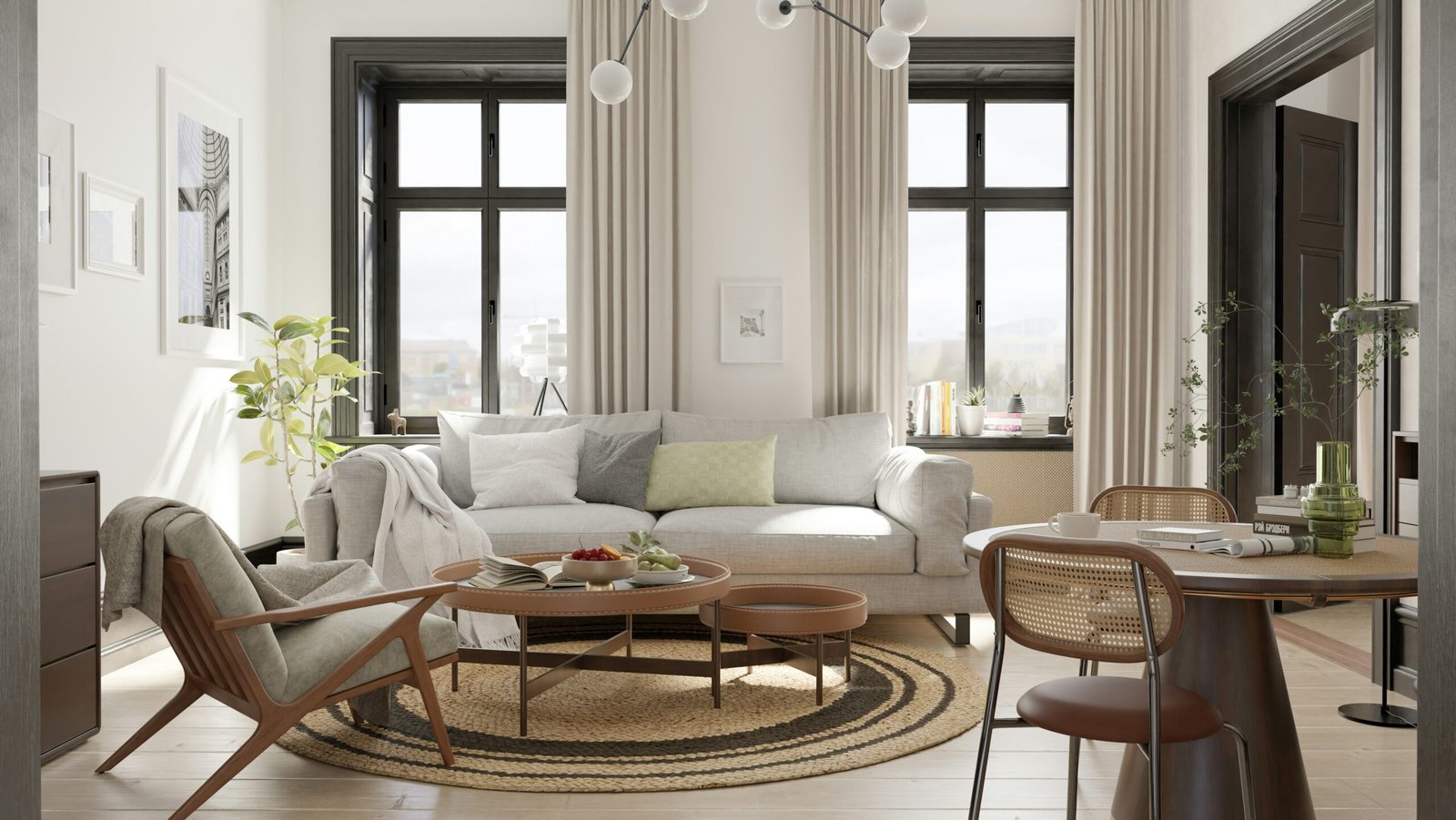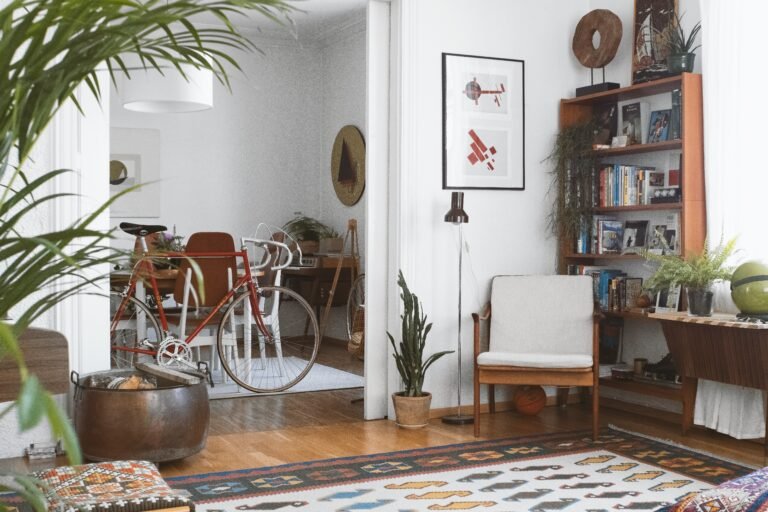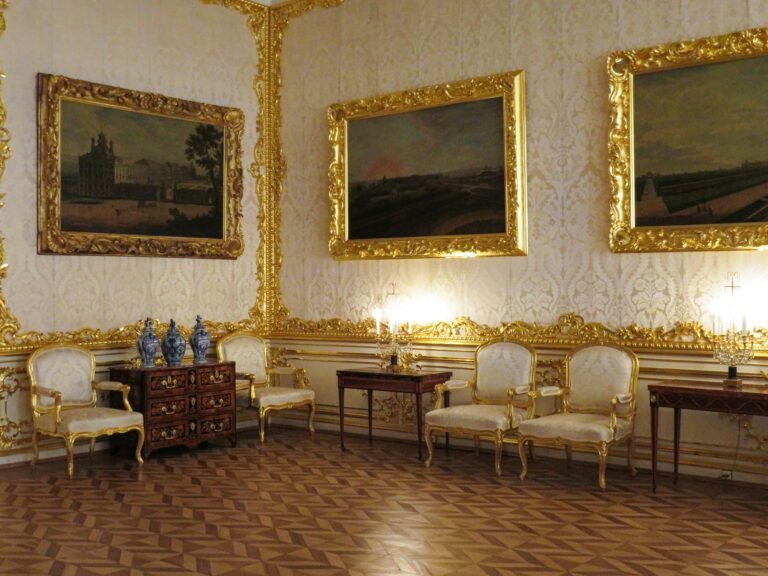In recent years, Japandi style has captured the attention of designers, homeowners, and anyone seeking a sense of calm in their living spaces. At its core, Japandi is more than just a fleeting interior design trend—it is a philosophy that combines the clean simplicity of Scandinavian design with the refined minimalism of Japanese aesthetics. The result is a look and feel that is both functional and serene, contemporary yet timeless.
I first discovered Japandi style while trying to make the most of my small apartment balcony. I wanted a corner that felt like an escape from the noise of the city but was still practical for daily life. By introducing a low wooden bench, soft linen cushions, and a few potted plants arranged in simple clay pots, I created a quiet retreat that perfectly balanced comfort and intention. That little corner became my daily reminder of how design can improve not only a space but also the way we feel within it.
This balance between Scandinavian coziness and Japanese minimalism is why Japandi continues to resonate with so many people worldwide. As our homes increasingly double as offices, sanctuaries, and gathering places, the demand for interiors that prioritize both peace and purpose has grown stronger. In fact, publications like Architectural Digest and Vogue have highlighted Japandi as one of the most enduring global design movements of the past decade.
In this article, we will explore the cultural roots of Japandi, break down its essential design elements, and provide practical guidance to help you bring this style into your own home. Along the way, I’ll share my personal experiences with Japandi-inspired design choices and how they’ve influenced my lifestyle for the better.
Understanding Japandi – A Cultural Harmony
The Origins of Japandi Design
To understand why Japandi style feels so natural, it helps to look at its roots. While the term itself is relatively new, the relationship between Japanese and Scandinavian aesthetics stretches back more than a century. During the mid-19th century, Scandinavian designers began to draw inspiration from Japan’s emphasis on craftsmanship, natural materials, and uncluttered simplicity. At the same time, Japan admired the practicality and warmth of Scandinavian interiors. This cultural exchange planted the seeds of what we now recognize as Japandi design.
What emerged is a hybrid that embraces the best of both worlds: the sleek lines and functionality of Scandinavian interiors, blended with the timeless refinement of Japanese minimalism. It’s a style that transcends geography, resonating with people everywhere who crave serenity without sacrificing comfort.
Wabi Sabi Meets Hygge
At the heart of Japandi lies the marriage of two philosophies: wabi sabi from Japan and hygge from Scandinavia.
- Wabi sabi celebrates imperfection and authenticity. A handmade ceramic cup, a weathered wooden table, or the patina of natural stone—these elements remind us that beauty lies in the imperfect and transient.
- Hygge, on the other hand, is about cultivating coziness and contentment. Think warm textiles, soft lighting, and spaces that invite people to gather and relax.
Together, these ideas form the backbone of Japandi design. They remind us that a home should not only look beautiful but also support a mindful, comfortable lifestyle.
In my own living room, I combined these principles by pairing a vintage oak coffee table—its surface marked with years of use—with a plush wool throw in a muted gray tone. The table carries wabi sabi’s imperfect charm, while the throw provides hygge’s warmth. The combination feels balanced, grounding, and deeply personal.
As Vogue describes it, Japandi is not just an aesthetic but “a philosophy of living with intention.” And that is what makes it so appealing: it is as much about how we live in our homes as how they look.
Core Elements of Japandi Interiors
Every interior design style is defined by its core principles, and Japandi style is no exception. What makes this approach so powerful is the way it combines simplicity and functionality without ever feeling cold or sterile. Instead, it feels warm, inviting, and deeply connected to nature. Below are the key elements that bring Japandi interiors to life.
Minimalist Neutral Palette
One of the first things you’ll notice in Japandi interiors is the neutral Japandi color palette. This usually includes whites, soft beiges, muted grays, and earthy greens. These shades create a calm and balanced environment that allows the eye to rest and the mind to relax.
When I redesigned my bedroom, I swapped bold accent walls for a soft greige (a mix of gray and beige). Suddenly, the entire space felt lighter and more expansive. Pairing this with linen bedding in off-white and a pale oak bedframe created a soothing retreat that I now look forward to at the end of each day.
As Architectural Digest explains, muted tones are a cornerstone of Japandi because they allow natural textures and materials to shine.
Natural Materials and Craftsmanship
Another defining feature of Japandi design is the use of Japandi natural materials. Wood, bamboo, rattan, stone, and linen are staples that bring warmth and authenticity to a space. Both Japanese and Scandinavian traditions value craftsmanship and longevity, favoring pieces that are well-made rather than mass-produced.
In my dining area, I replaced a glossy manufactured table with a solid wood one crafted by a local artisan. Not only did it elevate the atmosphere of the room, but it also gave me a deeper connection to the piece knowing that it was handmade.
According to Vogue, Japandi homes thrive on tactile elements—things you can touch and feel. That’s why linen curtains, ceramic pottery, and woven baskets are so often found in these spaces.
Functional Serenity and Clean Design
Functionality is at the heart of Japandi interiors. Spaces are thoughtfully designed, uncluttered, and free from unnecessary decoration. Clean lines and low-profile furniture make the home feel open, balanced, and practical.
This principle of Japanese minimalism ensures that every piece serves a purpose, while Scandinavian influence keeps the environment cozy and welcoming. I noticed this when I downsized my living room furniture: fewer items, but each one carefully chosen, made the room feel bigger and more peaceful.
Connection to Nature Indoors and Outdoors
Japandi encourages a strong connection with the natural world. Houseplants, natural light, and indoor-outdoor continuity are all essential. Even a small balcony or windowsill garden can bring life to a home.
On my balcony, I keep bonsai-inspired greenery next to a simple wooden bench. Each morning, sipping tea surrounded by these elements makes the city fade away for a moment.
The Times describes this as “mindful living,” reminding us that Japandi design isn’t only about aesthetics but also about creating environments that nurture well-being.
Texture and Quiet Details
Lastly, Japandi is about subtlety. Soft textiles, handcrafted ceramics, textured wood, and delicate patterns add depth without overwhelming the senses. It’s in the details—linen drapes moving with a breeze, the grain of natural oak, or the tactile surface of clay—that Japandi achieves its timeless charm.
When I layered a woven jute rug under my coffee table, the effect was immediate: the space felt grounded, warmer, and more lived-in. Small changes like these embody the quiet strength of Japandi interiors.
Japandi Style Inspirations for Your Home
Real World Examples
Across the world, designers and homeowners have embraced Japandi design as a way to create peaceful and practical interiors. Architectural Digest recently showcased a lake house where pale Baltic birch, stone accents, and expansive windows created an atmosphere of serenity grounded in natural beauty. Similarly, The Times highlighted Japandi as a leading interior trend for summer 2025, calling it a “mindful approach to living” that emphasizes simplicity and natural materials.
In many of these professional projects, the same principles appear: low-profile furniture, layered textures, soft lighting, and the thoughtful use of greenery. The result is a home that looks stylish but also feels restorative.
Even major retailers have picked up on the trend. IKEA, long known for its Scandinavian roots, now integrates Japandi-inspired lines into its collections, combining rattan, bamboo, and muted colors to make the aesthetic accessible to a wider audience.
My Personal Japandi Journey
While magazine features are inspiring, Japandi becomes most powerful when adapted to personal spaces. In my own home, I began small—with a simple wooden bench on my balcony paired with a linen throw. That single change set the tone for a space that quickly became my sanctuary.
Later, I extended this approach indoors. In my living room, I removed bulky shelving units and replaced them with a single oak sideboard. On top, I placed a stone vase with a single stem of eucalyptus. The effect was immediate—uncluttered, calming, and deeply grounding.
I also learned that Japandi home decor doesn’t have to be expensive. A handmade ceramic mug from a local market, a soft wool blanket draped over a chair, or even a carefully chosen indoor plant can bring Japandi warmth into everyday life. Each object tells a story, making the home not only functional but also personal.
Why Japandi Inspires Mindful Living
The beauty of Japandi style lies in its flexibility. It works in small apartments, suburban homes, and even larger properties. More importantly, it encourages us to think carefully about what we bring into our spaces. By blending the mindfulness of Japanese minimalism with the warmth of Scandinavian coziness, Japandi invites us to create homes that reflect who we are and how we want to live.
Designing Your Own Japandi Home Decor
Japandi Kitchens and Dining Spaces
The kitchen is often the heart of the home, and with Japandi home decor, it becomes a place of both function and tranquility. Scandinavian kitchens are known for efficiency, while Japanese kitchens prioritize minimalism and flow. Together, they create spaces that are sleek yet inviting.
To bring Japandi design into your kitchen, opt for handle-less wood cabinetry, soft matte finishes, and clean countertops. A neutral Japandi color palette—think soft grays, warm beiges, or natural wood tones—keeps the atmosphere calm and uncluttered. Adding linen curtains, bamboo cutting boards, or ceramic dishware can subtly highlight the natural elements that define the style.
In my own kitchen, I replaced harsh fluorescent lighting with a series of warm pendant lamps above the dining table. That simple switch transformed mealtimes into cozy gatherings rather than rushed daily routines.
According to Woman & Home, Japandi kitchens thrive on hidden storage solutions and sustainable choices, ensuring every item has a purpose without disrupting the visual harmony.
Japandi Living Rooms and Cozy Corners
The living room is where Japanese minimalism and Scandinavian hygge most naturally overlap. A Japandi-inspired living room prioritizes low-profile seating, clean lines, and layered textures. Instead of overstuffed furniture, think sleek sofas paired with a linen throw or a woven jute rug under a wooden coffee table.
In my own living room, I simplified the space by removing extra shelving and keeping only the essentials: a sofa, a sideboard, and a few carefully chosen decorative items. I added a paper lantern for soft ambient light and placed two indoor plants near the window. The result is a room that feels spacious yet cozy—a place where I actually want to linger.
The Spruce notes that Japandi living rooms should always prioritize natural light. Large windows or even sheer curtains allow daylight to filter in, creating a calming and uplifting environment.
Practical Tips for Everyday Serenity
Bringing Japandi style into your home doesn’t require a full renovation. Small changes can create big impact:
- Declutter first: Clear away items that no longer serve a purpose. Japandi thrives in open, breathable spaces.
- Layer natural textures: Combine wood, linen, stone, and ceramics for depth and character.
- Embrace sustainable quality: Invest in fewer but better pieces that last longer and age beautifully.
- Balance minimalism with warmth: Pair clean lines with cozy elements—like a wool throw, candles, or a soft rug—to avoid sterility.
- Think green: Even a few indoor plants can strengthen the connection to nature, which is central to Japandi interiors.
One of the best lessons I learned from adopting Japandi style is that it’s not about perfection—it’s about balance. My home feels calmer now not because I followed rules but because I made intentional choices about what to keep, what to highlight, and what to let go of.
Japandi Compared to Other Minimalist Styles
Japandi vs Wabi Sabi
At first glance, Japandi style and Wabi Sabi interiors share many similarities. Both prioritize simplicity, authenticity, and natural beauty. However, the distinction lies in their approach to imperfection.
- Wabi Sabi embraces the imperfect, the weathered, and the raw. A chipped ceramic bowl, a cracked plaster wall, or an asymmetrical piece of wood is not only accepted but celebrated.
- Japandi, while influenced by Wabi Sabi, takes a slightly more structured approach. It values craftsmanship, clean lines, and functionality while allowing subtle imperfections to add character rather than dominate the space.
For example, in my dining area, I use a rustic handmade wooden table (a nod to Wabi Sabi), but I pair it with sleek Scandinavian-inspired chairs that balance the ruggedness with order. The combination embodies Japandi’s harmony between roughness and refinement.
As Ideal Home points out, Wabi Sabi kitchens often lean rustic, while Japandi kitchens lean minimalist yet warm.
Japandi vs Scandinavian Minimalism
Scandinavian interiors have long been admired for their minimalism, cozy textures, and emphasis on functionality. Think pale wood flooring, white walls, soft textiles, and open, airy layouts.
Japandi design builds on these foundations but introduces Japanese restraint and balance. Where Scandinavian spaces sometimes use brighter whites and lighter woods, Japandi often opts for richer tones like dark walnut, smoked oak, or muted stone. This creates a deeper, more grounded atmosphere.
In my own home, I noticed the difference when I swapped a bright pine coffee table for a darker walnut version. The Scandinavian feel of the room softened into something more refined and meditative—very much in line with Japandi principles.
The Times notes that Japandi emphasizes mindful living more than Scandinavian design, inviting us not just to style our homes beautifully but also to slow down and live intentionally within them.
Why These Comparisons Matter
Understanding these differences is useful because it highlights what makes Japandi unique. It’s not just a midpoint between two aesthetics; it’s a philosophy that actively blends imperfection with order, warmth with restraint, and minimalism with coziness.
If you love the rustic imperfection of Wabi Sabi but also crave the comfort of Scandinavian design, Japandi offers a natural bridge between the two.
Conclusion – Why Japandi Style Endures
In a world that often feels fast-paced and overwhelming, Japandi style offers a refreshing antidote. By blending the clean lines and functionality of Scandinavian design with the mindfulness and elegance of Japanese minimalism, it creates homes that are both practical and peaceful.
What makes Japandi truly timeless is that it goes beyond trends. Neutral color palettes, natural materials, and uncluttered layouts will never feel outdated because they speak to something deeper—the human desire for balance, connection, and calm. This is why leading voices in design, from Architectural Digest to Vogue, continue to highlight Japandi as more than just a passing aesthetic. It is a way of living.
In my own home, Japandi has taught me that design isn’t about filling every corner with décor but about making intentional choices that reflect how I want to live. My balcony bench, my linen cushions, my simple ceramic mug—all of these small elements remind me daily that less can truly be more.
As you begin your own journey with Japandi home decor, remember that you don’t need to adopt every rule or buy all-new furniture. Start with what feels right—clear some clutter, add natural textures, or introduce a plant or two. Gradually, your space will evolve into a sanctuary that feels authentically yours.
And that is the enduring magic of Japandi: it’s not only a design style but a philosophy of harmony, simplicity, and mindful living that grows with you over time.
FAQ about Japandi Style
Alex is the creator of Homely Haven, a space dedicated to simple, stylish ideas for interiors and gardens alike. With a passion for cozy living rooms, inviting outdoor spaces, and practical DIY solutions, Alex shares tips and guides that help turn any house into a true home.
From budget-friendly decorating hacks to weekend garden projects, the goal is always the same: to inspire you to create spaces that feel personal, beautiful, and welcoming. When not writing, Alex is usually rearranging furniture, sketching new garden layouts, or exploring design trends for the next project.








